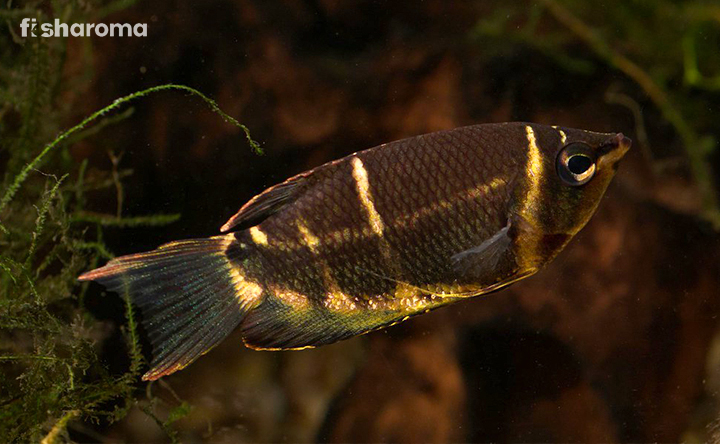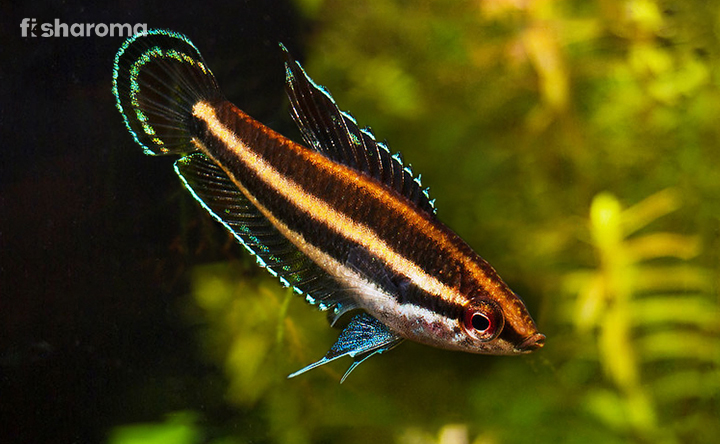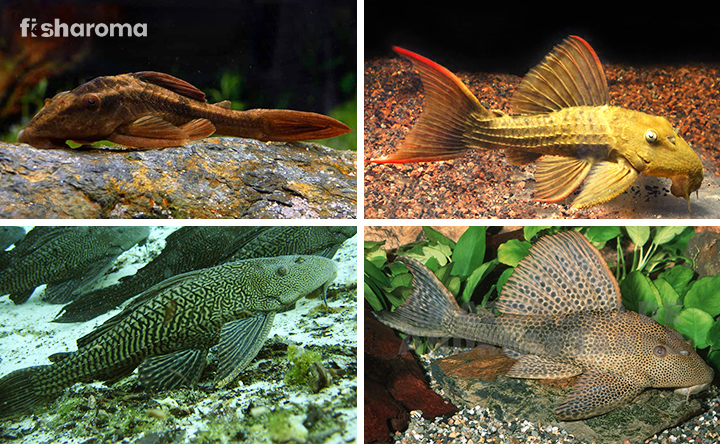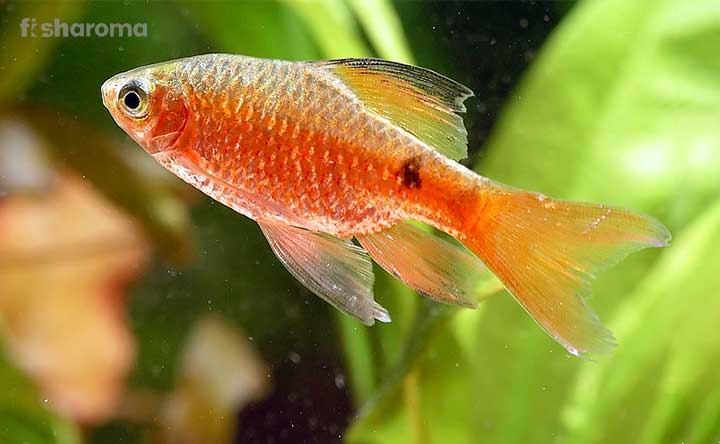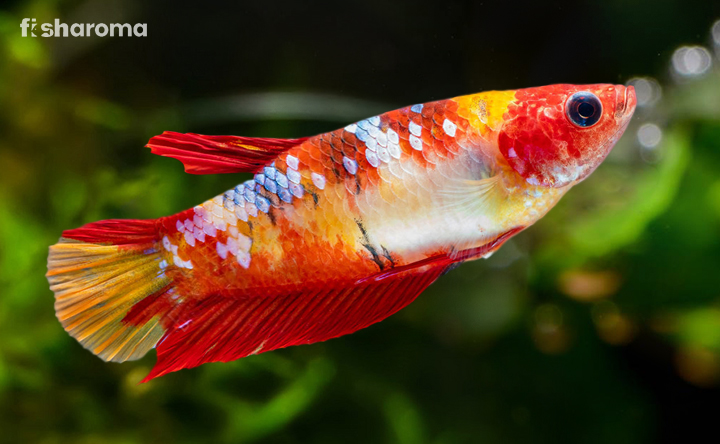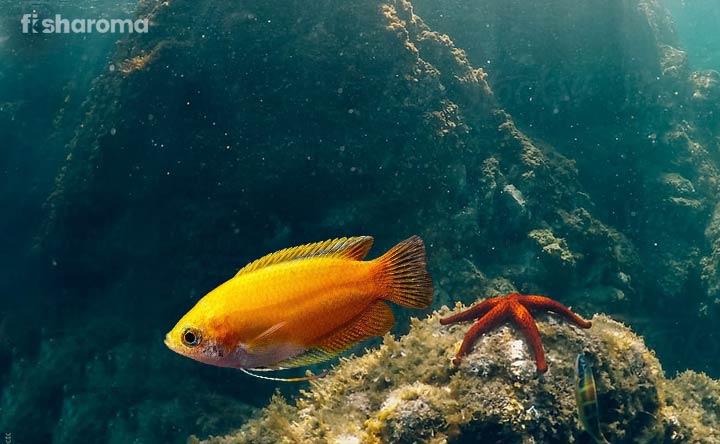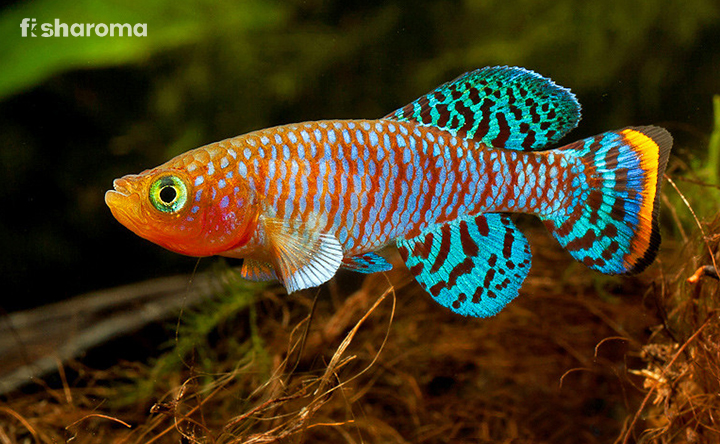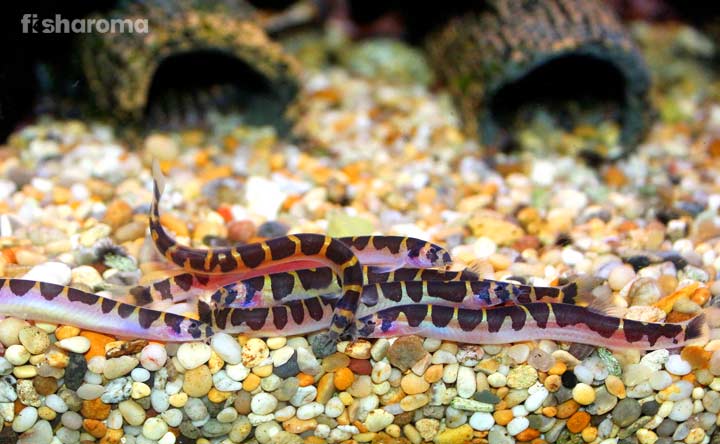African Cichlid: The Complete Care Guide of This Ferocious Fish
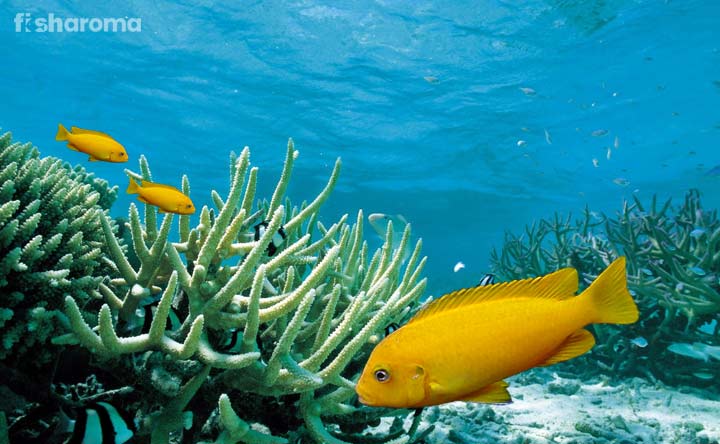
- Origin & Habitat of African Cichlid
- Appearance of African Cichlid
- Behaviour of African Cichlid
- Types of African Cichlid
- Lifespan of African Cichlid
- Diet of African Cichlid
- Tank Requirements for African Cichlid
- Water Type for African Cichlid
- Compatibility of African Cichlid
- Breeding of African Cichlid
- African Cichlid Diseases
- Summary
When it comes to colorful fish, there is hardly a group of fish with more color variants in them than the African Cichlid. Extremely popular with fish enthusiasts across the globe, they definitely light up the ambiance of an aquarium. No pun intended, but they are undoubtedly a great catch. But how do you take care of them and raise them healthily in a home setting? We breakdown everything that you need to know about these freshwater charmers.
Key Specifications of African Cichlid
Before we give you detailed information on the care guide of this freshwater being, let us take you through some of its key specifications.
| Scientific Name | Cichlidae |
| Family | Cichlidae |
| Origin | East Africa |
| Size | 4-8” (7-20 cm) |
| Color | Varied |
| Care Level | Moderate |
| Lifespan | 8 Years |
| Temperament | Aggressive |
| Compatibility | Depends on Species |
| Tank Size | 30-Gallons |
| Diet | Depends on Species |
Overview
African Cichlids are part of a diverse group of Cichlids that come from the biological family of Cichlidae. Their fascinating lifestyle, vibrant color, and intelligent behavior keep them on top of the charts for the most favored aquatic pet species.
Contrary to popular belief, they aren’t saltwater species. The misconception is mainly due to their ultra-dynamic and diverse color pattern, which is a rarity among freshwater fish. Since their ancestors were saltwater species, Cichlids are known as ‘secondary freshwater fish”.
Origin & Habitat of African Cichlid
African Cichlids are native to Eastern Africa, where they can be found in abundance in three major lakes – Lake Malawi, Lake Tanganyika, and Lake Victoria, with Lake Malawi being the primary habitat for most of them.
Lake Malawi
The Cichlids found in Lake Malawi are the most vibrantly-colored ones. There are more than 800 different species of African Cichlids that reside here. The Cichlids found in this lake can be classified into two distinct groups. The two groups are incompatible with each other and therefore shouldn’t be kept together. Here’s a description of these two groups.
Mbuna Group
Endemic to Lake Malawi, they reside in the rocky areas of the lake. Active and aggressive by nature, common examples of this group are Zebra Cichlid, Electric Yellow Cichlid, Bumblebee Cichlid, Golden Cichlid, Maingano, among others.
Haplochromis Group
This group inhabits the open water and sandy areas of Lake Malawi and are usually unspectacular in their colors. Peacock Cichlid is a prime example of this group.
Lake Tanganyika
Home to more than 250 different species of Cichlids, this Lake is famous for hosting the largest and the smallest specimens in the Cichlidae family. Cyprichromis, Ectodini, and Tropheini are some of the Cichlids that you can find here.
Lake Victoria
Lake Victoria also hosts a bunch of splendid Cichlid species that are spread across its coastal fringes. Most of the Cichlids in this lake are Haplochromis. Common examples of Lake Vitoria Cichlids are Blue Neon Cichlid, Kenya Gold Cichlid, Finebar Scraper Cichlid, Broken Bar Cichlid, Orange Rock Hunter Cichlid, among others.
Appearance of African Cichlid
There are around 1,300 different types of African Cichlids across the globe, each having their own color patterns. However, one characteristic that is present in all of them is the fusion of the bottom pharyngeal bones into a single tooth-bearing structure. These bones act as a second set of jaws that help them in processing food. In some, there are tiny rows of teeth that help them in scraping off algae from rocks and substrate.
In addition, they have one nostril on each side of their forehead along with a rounded tail. Their lateral line is discontinuous and they sport three anal spines.

While most of them have an ovate, laterally compressed body, some have cylindrical, elongated, and strongly compressed bodies. In some African Cichlids, the pelvic fins are elongated and bottom edges of their anal and dorsal fins are pointed.
Size of African Cichlid
Although there are species that can grow up to an astounding length of 31” (80 cm), there are others that grow only 1.4” (3.5 cm). On average, an African Cichlid grows up to 4-8” (7-20 cm).
Color of African Cichlid
Colors vary from species to species, but one feature that is common in all of them is that their colors are at their palest self in their juvenile stage and brighten up as they grow old.
When provoked or angered, their color intensifies. During mating too, their colors brighten up. Females are generally less colorful than their male counterparts. They usually have dull colors or patterns.
Behavior of African Cichlid
African Cichlids are highly active and are able to sense tiniest of the movements in their surroundings. As you can understand, they are one of the fastest freshwater pets that you can have in your home.
What is not known to most people is that they are skilled jumpers too. So, you are going to have to keep a close watch on them if you plan to host them in an open tank.
They are infamous for their aggressive persona, which is tied in with their territorial nature. Their aggression elevates furthermore during mating. This is why you will find the weaker ones trying to hide from the aggression of the stronger ones. Hiding spots also helps them in claiming their own territory, which can be advantageous in the sense that they won’t rummage through other’s territories.
Besides, they also spend a lot of time digging into the substrate, primarily in search of food.
Some Cichlids use digging as a hunting strategy wherein they play dead by lying into the burrows they dig up and waiting on to startle unsuspecting preys.
Types of African Cichlid
As stated above, there are around 1,300 different types of African Cichlids, and new species are still being discovered to this date. Among them, we are presenting before you some of the most popular species.
Orange Zebra Cichlid

Very beginner-friendly by nature, they sport a long dorsal tail that runs all throughout their body. They are also known as Yellow Lab or Lemon Drop.
Electric Blue Hap Cichlid

Known for their striking blue color, they are highly adaptable, being able to live with other species of Cichlids except for African Peacock Cichlid.
African Peacock Cichlid

Probably the most popular African Cichlid among fish enthusiasts, they have various types in their kind such as Red Shoulder, Midnight, Fairy, among others.
African Butterfly Cichlid

One of the most peaceful African Cichlids, they are identified by five prominent black stripes that run vertically through their bodies. They also have striking iridescent spots on their body that come in purple, green, blue or yellow color.
Buffalo Head Cichlid

Also known as Blockhead, Lionhead, Humphead, among others, they have a uniquely-shaped head that distinguishes them from other types of African Cichlids.
Lifespan of African Cichlid
Again, it depends on the individual species, but on average, they live for 8 years in captivity. Some are known to die within 3 years, while others continue to live for 10 years.
Diet of African Cichlid
Similar to their color patterns and lifestyle, the diet of an African Cichlid depends strictly on the species. As such, there are examples of herbivores, carnivores, and omnivores species among them. Some are even strictly insectivores. Therefore, you need to research well what type of diet your African Cichlid prefers.
For instance, while the Tilapias are herbivores, feeding on plant matters and algae; the Electric Yellow Cichlids are omnivores, feeding on plants and small fish both. Peacock Cichlids are insectivores who hunt small worms seen in their surroundings.
For herbivores, the ideal food choices are as follows.
- Lettuce
- Spinach
- Peas
For carnivores, you can choose the following.
- Brine Shrimp
- Krill
You have to feed pigment-rich food to red, orange and yellow-colored fish in order to maintain the brightness of their colors.
Feeding 3-4 times a day in small quantities that they can eat within two minutes is recommended. Overfeeding is obviously unhealthy since it would lead to bloating and nitrate poisoning, especially in herbivores. A proper diet will also help you keep them calm.
Moreover, they are also pretty non-fussy about eating flake and frozen food. So, you can include that in their diet regime. For bottom dwellers, we recommend including pellets and algae wafers in their diet.
Spirulina serves as a safe food option for all of them since it is made up of 65-70% protein.
Tank Requirements for African Cichlid
Let us take a look at the key points you need to keep in mind while setting a tank for an African Cichlid.
Tank Size
For keeping a single African Cichlid, you would require a 29-gallon tank. If you are planning to keep more than one African Cichlid, then you would need two gallons for every inch of a fully grown fish. So, go figure!
Just remember, the bigger the tank, the less their aggression will be.
Tank Lid
Ideally, we would recommend you not to keep them in open tanks owing to their jumping skills. Just get a tight hood for their tank and maintain a gap of 6-8” (15-20 cm) from the water surface to the tank lid.
Filter
The filter that you pick must be able to process the entire water content 3-5 times in an hour. In other words, a 29-gallon tank must be able to push through 87-145 gallons every hour.
Cichlids, in general, are messy eaters and they excrete profusely. So, your filter must be strong enough to manage the waste produced. Moreover, these fish need well-oxygenated water. Thus, proper aeration is a must in their tank, which is possible only with a good filtration system. Ideally, a dual canister filtration works extremely well with them.
Nature of Lighting
Avoid keeping an African Cichlid tank directly under sunlight. Moderate artificial light will suffice for them.
Presence of Flora
African Cichlids are known for nibbling plant leaves. Thus, choose hardy plants for their tank. In addition, many plants are unable to withstand the water condition required for these fish.
In addition, due to these fish being excellent scavengers, chances of your plant getting uprooted is also there. But still, if you really want to keep plants with them, then Anubias, Java Fern, and Amazon Swords will be your best bet.
Ornaments
Ornaments like rocks and aquatic caves will serve as hiding spots for these fish, which is needed especially during mating.
Substrate
Try to provide a sand-based substrate for your African Cichlids since its texture would mimic the substrate of their natural environment. They are known to dive into the substrate, dig holes and build nests in them, while also cleansing their gills in them. Also, they graze through the substrate in search of food.
Cleaning Method
African Cichlids are not the cleanest of fish, so you would need to put in a lot of effort to clean the tank. Try to clean the tank every three weeks.
To clean the tank, you need to empty the tank by transferring the water along with the fish to a bucket, removing the décor and substrate, and wiping the interiors of the glass walls with a soft cloth dipped in lukewarm water. Scrape off any algae residue.
Proceed to clean the substrate and ornaments of the tank with plain water. Do not use any soap or chemical-based products for cleaning.
Water Type for African Cichlid
Since they are a freshwater being, tap water would work for them. For safety, just add de-chlorinator or water conditioner to it if the level of chlorine is very high in the water of your locality. The ideal water condition for an African Cichlid should have the following features.
Temperature
The temperature of the water in your African Cichlid tank should be slightly warmer. 75-80° F (24-26° C) is the recommended bracket for them.
pH Level
In the wild, the water that they reside in is alkaline in nature. Thus, the pH level of the water in your tank should be 7.8-8.6.
Hardness
The water of Lake Malawi, Lake Tanganyika, and Lake Victoria are quite hard in nature, which is why you need to maintain the hardness of the water between 4-6 dH.
Replacement Procedure
It is a known fact that these fish produce a whole lot of waste products. Thus, regular replacement of the tank water is an absolute must for them. Changing the entire water content will put the health of your pet in jeopardy since they wouldn’t be able to adapt fast enough to the new batch of water.
So, try to follow any of the following three water replacement schedules and try to regularly maintain it.
| Time Interval of Water Change | Percentage of Total Water to be Replaced |
| Weekly | 10% |
| Bi-weekly/Fortnightly | 20% |
| Monthly | 40% |
Make sure the pH level, hardness, and temperature of the new batch of water are same as of the existing batch of water.
Compatibilty of African Cichlid
Owing to the territorial nature of these fish, you have to be very cautious while choosing their tankmates.
Try not to host different species of African Cichlids in a single tank since the immune system of each species is different from one another and keeping them together can create a lot of stress in them. For instance, the Malawian species shouldn’t be kept with the Victorian ones. In fact, different members of Malawian are incompatible with one another.
If you are keeping the same species of an African Cichlid together, make sure each of them has ample space for themselves alongside individual hiding spots.
Suitable Tankmates for African Cichlid
Bottom-dwelling fish that are large enough in size and aggressive enough to defend themselves bore well with African Cichlids. So does fast swimmers. Some suitable tankmates for them are as follows.
- African Catfish
- Plecostomus Catfish
- Clown Loach
Unsuitable Tankmates for African Cichlid
Peaceful fish should be avoided because they will eventually be bullied by the African Cichlids. On the other hand, small fish will become food for them. So, avoid these types of fish. Examples of unsuitable tankmates for an African Cichlid are Tetra and Convict Cichlid, among others.
Breeding of African Cichlid
Some species of African Cichlids are quite easy to breed in captivity. The breeding process is more or less the same in most of them and here is how it is carried out.
After laying the eggs, they guard them for safety until they hatch. Interestingly, some species are mouthbrooders, meaning they hold their fertilized eggs in their mouth until they hatch, which takes about three weeks. During breeding, these fish become increasingly aggressive. They are noted for their strong parental instincts, which is evident by their mouthbrooding habit.
After the eggs are hatched, the young fries are taken care of by the females for 1-2 weeks, after which they usually fend for themselves.
Some species take three months to mature while others take a bit longer. Sometimes, they tend to eat their own fries. To avoid such a situation, provide ample food to them during these stages while not over-feeding them. Also, keep the male Cichlid in a different tank if possible, during this stage since they are known to harass the females post-mating.
For them to mate, the environment has to be static, meaning no addition of new fish, no aquascaping, and no changes to the current water parameters.
The pre-mating ritual in itself is fascinating to watch. Cichlids perform a sort of courting ritual in order to attract their mates which involves display of colors and some dance-like movements.
African Cichlid Diseases
African Cichlids aren’t immune to diseases, much like other freshwater fish. Some of the most common diseases that strike them often are as follows.
Ich
Also known as White Spot disease, it is marked by white spots on their fins and bodies.
Gill Flukes
A parasitic disease, it is marked by a slime covering on their gills that prevents them from breathing normally.
Malawi Boat
It can be identified with abnormal swelling in the abdomen that threatens their liver and kidney.
Swim Bladder Disease
Caused by poor nutrition or injury, it stops your fish from staying submerged.
Tuberculosis
A highly contagious disease, it is marked by a loss of appetite and white blotches.
Cotton Wool Disease
A fungal disease, it is identified by white growths on their body.
Hexamita
Another parasitic disease, it is marked by lesions and a loss of appetite.
Most of the parasitic diseases can be avoided by temporarily raising the temperature to 82° F (28° C). In addition, irregular cleaning of the tank, not replacing the tank water, not quarantining new fish and tank décor items can also result in these diseases. In fact, too much protein-based diet is also unhealthy and dangerous for them.
Get veterinary help as soon as you see these symptoms in your pet. Remember, abnormal swimming patterns are also a sign of an unhealthy fish.
Try and avoid keeping African Cichlids with South American Cichlids since that heightens their chances of contracting diseases.
Interesting Facts about African Cichlid
- African Cichlids are known to regenerate their teeth every 100 days or so in order to replace any that have been damaged or lost.
- They are known for cross-breeding in captivity.
- They have the ability to communicate with each other through visual, tactile, chemical, and acoustic cues.
Summary
African Cichlids represent a vast group of freshwater fish that have dominated the aquarium pet industry for years now. Their charming personality clubbed with eccentric color makes them an ideal pet for your home.
Most species in their group tend to be semi-aggressive in nature and you need to pay attention while picking their tankmates. Another advantage with these fish is that that they are very easy to breed, which is a trait that many aquarists look for. Hopefully, with our care guide, you definitely will be well prepared to host them healthily in your tank.
Similar Freshwater-Related Articles for Your Aquarium
- How to Setup a Cichlid Tank?: A step-by-step guide of how to set up a Cichlid tank from scratch.
- Harlequin Rasbora Care Guide: Looking for docile, calm fish? Harlequin Rasbora is what you need for your freshwater aquarium.
- Black Ghost Knifefish Care Guide: Shaped like a knife and colored in ghost black, they are not your average everyday aquarium pet.

